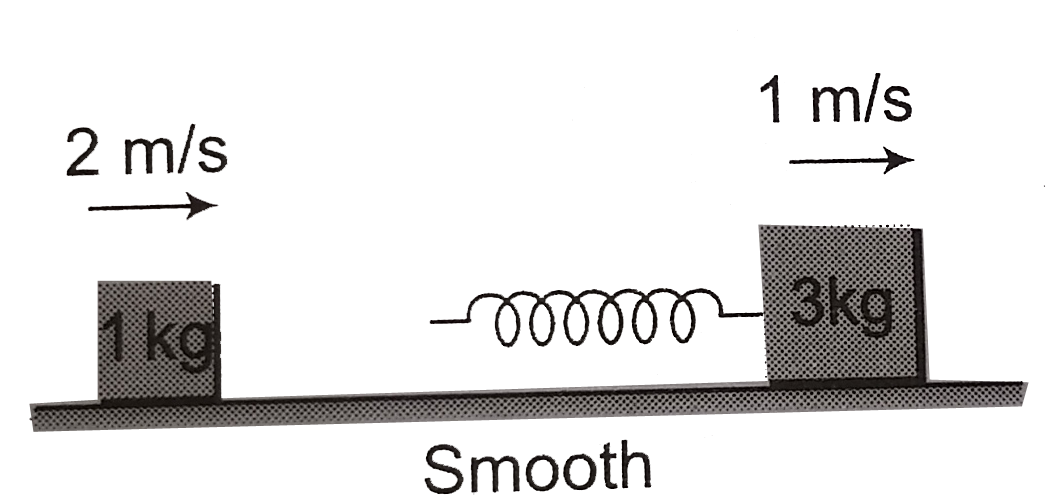Two spheres of masses 1 kg and 2 kg are moving with velocities of 10 m/s and 5 m/s respectively in the same direction. After the collision the velocity of the lighter sphere decreases by 4 m/s. What is the coefficient of restitution?
0.1
0.15
0.2
0.25
The correct Answer is:C
When the ball falls through a distanceh1, the velocity acquired by it is given vy
v=√2gh1 [∵v2=u2+2gh]
After striking the horizontal surface, it moves upwards with a velocity v' and rises through a height h2.
For the upwards journey,
0−v'2−2gh2 ∴v1=√2gh2
∴ Coefficient of restitution,
e=v1v=√2gh22gh1=√h2h1
∴e=√1.282=√0.64=0.8
Topper's Solved these Questions
Similar Questions
Two bodies of masses 2 kg and 4 kg are moving with velocities 2 m/s and 10 m/s respectively along same direction. Then the velocity of their centre of mass will be
View SolutionTwo smooth spheres A and B of masses 4kg and 8kg move with velocities 9m/s and 3m/s in opposite directions. If A rebounds on its path with velocity 1m/s, then
View Solution
Knowledge Check
- Question 1 - Select One
Two bodies of masses 2kg and 4 kg are moving with velocities 20 m/s and 10m/s towards each other due to mutual gravitational attraction . What is the velocity of their centre of mass ?
A5.3ms−1B6.4ms−1CZeroD8.1ms−1 - Question 2 - Select One
Two balls A and B having masses 1 kg and 2 kg, moving with speeds 21 m/s and 4 m/s respectively in opposite direction, collide head on. After collision A moves with a speed of 1 m/s in the same direction, then the coefficient of restitution is
A0.1B0.2C0.4DNone - Question 3 - Select One
Two blocks of masses 1kg and 3kg are moving with velocities 2m/s and 1m/s , respectively , as shown. If the spring constant is 75N/m , the maximum compression of the spring is
 A5cmB2cmC3cmD4cm
A5cmB2cmC3cmD4cm
Two balls of masses 10 kg and 20 kg approach each other with velocities 30 m/s and 20 m/s respectively . Calculate their velocities after they undergo a perfectly eleastic collision .
View SolutionTwo smooth spheres A and B of equal radii but masses 1 kg and 2 kg move with speeds 21m/s and 4 m/s respectively in opposite directions and collide. The velocity of A is reduced to 1 m/s in the same direction. Then, which of the following statements is incorrect?
View SolutionTwo particles A and B of masses 10 kg and 38 kg, respectively, are moving along the same straight line with velocities 15 m/s and 3 m/s, respectively, in the same direction. After elastic collision, the velocities of A and B are vAand vB, respectively, in the direction of initial motion. Then
 View Solution
View SolutionTwo bodies of masses 2 kg and 4 kg are moving with velocities 2 m s−1 and 10 m s−1 towards each other due to mutual gravitational attraction. What is the velocity of their centre of mass?
View SolutionTwo bodies of different masses 2kg and 4kg are moving with velocities 2m/s and 10m/s towards each other due to mutual gravitational attraction. Then the velocity of the centre of mass is
View Solution

